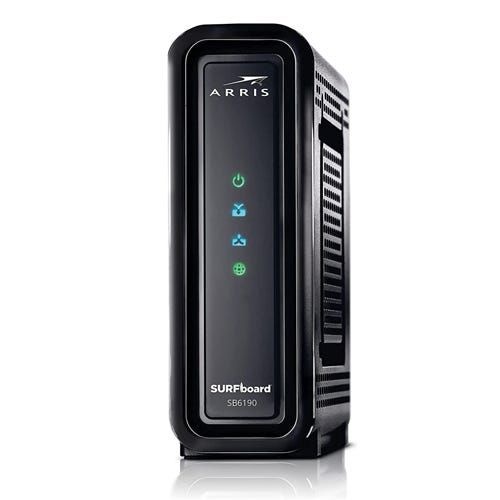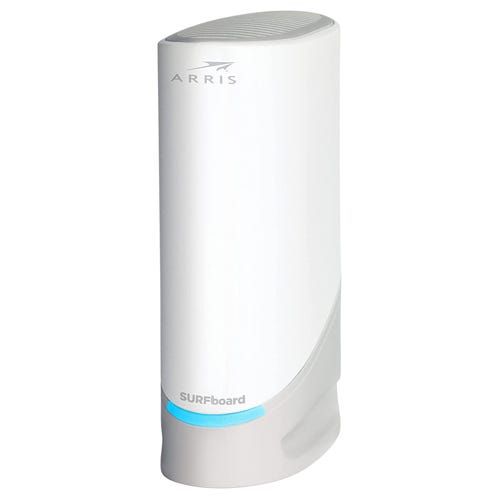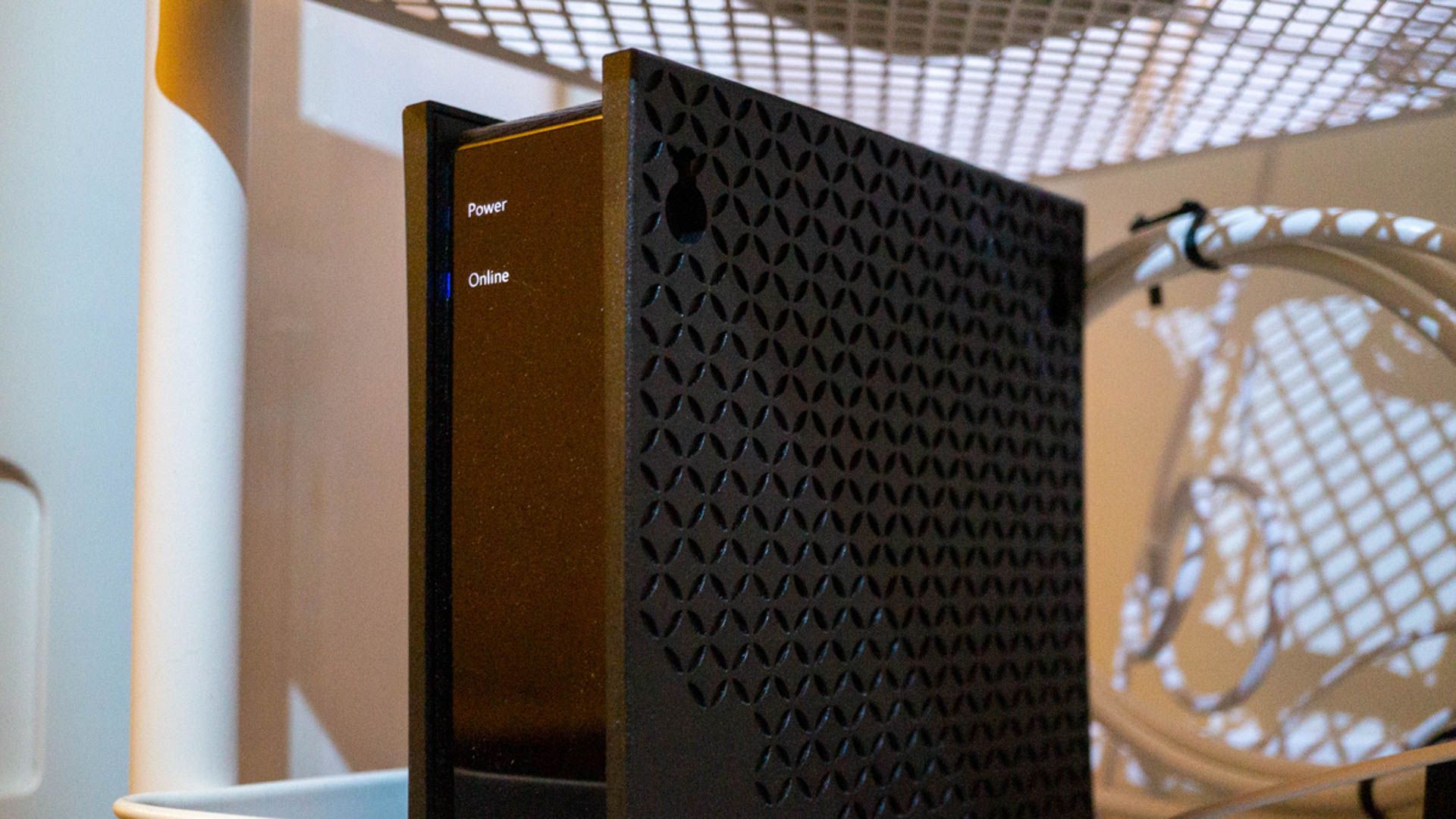Quick Links
Key Takeaways
Cable modem channels are like additional highway lanes for data to travel to and from your home. At a minimum, you need enough channels to support the maximum speed of your cable internet package.
If you're shopping for a cable modem, you'll come across the term "channels" paired with number designations like 16x4 or 24x8. What that means isn't immediately apparent, but it has a big impact on your internet connection speed. Here's what you need to know when shopping for an upgrade.
What Are Cable Modem Channels?
Cable modem channels are divisions of the available frequencies set aside by your cable company to deliver internet access.
It's very easy to get lost in the weeds of technical specifications and discussion when talking about cable modem channels and how they operate on a conceptual level, so we're going to talk about them primarily by way of analogy.
It's easiest to understand cable modem channels by considering the coaxial (CATV) cable that delivers your internet (and potentially TV and VoIP services, too) as a giant superhighway with many lanes.
Each lane of the highway is a frequency range, or channel. Some of the lanes are reserved for non-internet use (after all, cable TV came long before cable internet, and the same infrastructure still delivers TV today). The lanes available for internet use are the "channels" relevant to our discussion of cable modems and what kind you want for the best experience.
Cable modems are built to the Data Over Cable Service Interface Specification (DOCSIS) standard, introduced in 1997. Early DOCSIS 1.0, 1.1, and 2.0 modems were limited to a single channel for downstream and upstream bandwidth.
These single channels maxed out at a theoretical 40 Mbps down, 10 Mbps up (boosted to 30 Mbps up in version 2.0). In our superhighway analogy, this was like your internet connection being limited to a two-lane road configuration with one lane coming and one lane going.
The arrival of DOCSIS 3.0 in 2006 was a huge step forward in cable modem design and cable-based internet delivery. DOCSIS 3.0, among many improvements, introduced channel bonding. DOCSIS 3.0 certification requires a minimum of 4 channels for download and 4 channels for upload, which gave rise to the 4x4 designation (and later variations). DOCSIS 3.0 channels still max out at around 40 Mbps, but you're not limited to only one of them.
Now, instead of your download stuck in one lane and your upload stuck in another lane, your cable modem can combine channels up to the number of channels allowed by your particular cable internet subscription plan to boost both the speed of your internet as well as balance the load across multiple "lanes" of the highway. Instead of one lane of bandwidth in each direction, you could have up to 32 for downloads and 8 for uploads.
Not only does this allow for a raw speed increase, but additional channels also improve the overall user experience as the modem actively load balances network demand across all the channels.
How Many Cable Modem Channels Do I Need?
Most cable internet subscribers will need at least DOCSIS 3.0 16x4 modem to meet the minimum requirements for the average cable broadband package, but the cost of DOCSIS 3.0 32x8 modems has dropped enough it doesn't make sense to buy a lesser modem.

ARRIS SURFboard SB6190 DOCSIS 3.0 32 x 8
This dependable and popular option from the Arris Surfboard lineup is perfect for cable internet subscribers with any subscription tier at or below 800 Mbps, which is the majority of cable broadband users in the United States.
Modems like the 32x8 Arris Surfboard SB6190 are available for under $100 and are often on sale for $50-60. A DOCSIS 3.0 32x8 modem will cover everything from the most basic cable broadband tier up to around 800 Mbps, which offers a lot of room for growth for most people. (For internet speeds at the gigabit or multi-gigabit level, check out the later section of this article about gigabit cable internet.)
It's important to note that while more cable modem channels offer room for growth, more channels won't magically make a slow cable internet connection faster unless your existing modem was underpowered for your particular subscription tier.
Your cable internet provider will only provision access to the number of channels required for your internet package. Upgrading a 16x4 modem to a 32x8 modem won't automatically unlock the higher speed, but it will (thanks to updated hardware) offer a better experience and a seamless way to upgrade to faster internet without buying a new modem.
What Are the DOCSIS 3.0 Channel Configurations?
When comparing DOCSIS 3.0 modems, you will see modem download and upload channel configurations designated in the following combinations: 4x4, 8x4, 16x4, 24x8, and 32x8.
In the previous section, we highlighted the minimum and optimal configurations for most people. But if you're curious about how different channel configurations work, what your existing modem is capable of, and whether or not you should upgrade, however, here's a more detailed look at the cable modem channels.
The ultimate authority on which channel combination (and which modem, for that matter) will work with your particular package is your Internet Service Provider (ISP). But we can break things down and make recommendations based on your internet package (and the one you may want to upgrade to in the future).
Before we do, let's talk about theoretical speeds. Like Wi-Fi, cable modems have a theoretical maximum speed. In real-world conditions, you should expect a DOCSIS 3.0 modem to deliver a fraction of the theoretical speed because of things like network and protocol overhead, how cable internet providers allocate available channels, and so on.
Because of this, as a general rule, the modems on cable providers' recommended/authorized lists usually have a theoretical speed that is 25-50% higher than the customer's actual internet speed.
In the breakdown below, we'll highlight the theoretical speed, the expected real-world speeds, and what minimum modem configuration you need for common internet speed tiers.
4x4 Cable Modems: You won't find many of these early DOCSIS 3.0 modems in the wild these days (and if you try to shop for one, you'll likely find the only available options are old refurbished models). 4x4 modems support a theoretical maximum download of around 170 Mbps and 122 Mbps up.
Most cable companies won't activate modems that old, and if you can still fire it up your real-world performance will vary wildly, with some providers capping 4x4 modems at 50 Mbps. Even if you can get into the 120-135 Mbps the modem can realistically support, you'll quickly find the older hardware is pretty unstable. We're talking about it here as a historical footnote.
8X4 Cable Modems: Like 4x4 modems, 8x4 modems are considered deprecated, and we wouldn't recommend purchasing a new or renewed model. They have a theoretical maximum download of 343 Mbps and the same 122 Mbps upload (on account of the same number of upstream channels) as 4x4 modems.
If you currently have an 8x4 modem and it's still kicking along, it's sufficient for 50-100 Mbps cable internet packages. That said, it is probably wise to replace it both to get newer and better-supported hardware and be prepared for future potential upgrades.
16x4 Cable Modems: If you're looking to save money and you're one of the millions of cable internet subscribers who have cable broadband at or below 300 Mbps, a 16x4 modem is a perfectly serviceable budget pick if you buy a renewed model. The price of new 16x4 models is no longer competitive.
16x4 modems have a theoretical maximum speed of 686 down and 122 Mbps up. If you check the approved cable modem lists for your cable provider, you'll likely find that the minimum approved models for everything from the sub-100Mbps tiers up to around 300-400 Mbps tier are 16x4 modems.
24x8 Cable Modems: 24x8 modems have a theoretical maximum speed of 1029 Mbps down and 245 Mbps up (thanks to the doubling of the upstream channels over the previously discussed modems). Depending on your provider, you'll find 24x8 modems are compatible with everything up to 400-800 Mbps.
If you search for 24x8 modems, you'll quickly find relatively few to pick from. This channel configuration is kind of an odd-man-out in terms of manufacturing and adoption simply because it falls in the gap between 16x4 and 32x8 with little financial incentive for the consumer to pick 24x8 over 32x8. New or renewed, 24x8 modems are not competitively positioned from a price or hardware standpoint.
32x8 Cable Modems: The highest DOCSIS 3.0 configuration you'll find on the market is 32x8. This configuration has a maximum theoretical speed of 1372 Mbps down, and 245 Mbps up. You'll find such modems on provider lists for speed tiers up to 800 Mbps.
For everything short of the near gigabit, gigabit, or multi-gigabit packages, a 32x8 modem can handle it. If you wanted to buy one modem with an eye toward using it through multiple package upgrades (limited only by that near-gigabit barrier), a 32x8 modem would serve you well.
What If I Have Gigabit Cable Internet?
If you want cable internet in the gigabit or multi-gigabit range, you need a DOCSIS 3.1 modem, as cable providers require the improvements in the DOCSIS 3.1 standard to deliver that bandwidth under real-world conditions.
Despite the channel configuration of DOCSIS 3.0 32x8 modems theoretically supporting gigabit speeds, cable providers only recommend it for their up-to-800 Mbps packages.

ARRIS Surfboard S33 DOCSIS 3.1 Multi-Gigabit Cable Modem
Advanced cable modems like the Surfboard S33 can handle everything from a basic cable internet package all the way up to multi-gigabit packages, with plenty of room for growth.
Instead, if you want near-gigabit speeds or higher, you must use a DOCSIS 3.1 modem. Even though DOCSIS 3.1 modems use a 32x8 channel configuration like DOCSIS 3.0 modems, the channel bonding and utilization were completely overhauled for DOCSIS 3.1.
DOCSIS 3.1 supports a maximum theoretical speed of 10 Gbps down and 1.5 Gbps up, which leaves plenty of room for growth and completely covers the available gigabit and multi-gigabit cable internet packages on the market.
It's also worth noting that DOCSIS 3.1 is backward compatible, so if you pair a DOCSIS 3.1 modem like the Arris Surfboard S33 with an updated Wi-Fi router, your home network needs will be covered for years to come.

